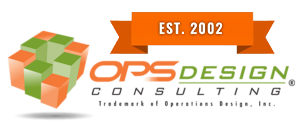Rolling out new technology or automation is never as simple as flipping a switch. While the end goal is increased efficiency and long-term gains, the path toward implementation is often complex. The challenge lies in integrating new systems into existing operations without creating costly disruptions. In today’s fast-paced environment, where companies must adapt quickly to remain competitive, striking this balance has never been more important.
Planning Beyond The Technology
A successful implementation starts well before the first piece of equipment arrives or the first software license is activated. Developing a detailed schedule and realistic budget sets the foundation. These plans should extend beyond the cost of the technology itself, accounting for training, integration, downtime, and even temporary drops in productivity as employees adjust. Considering every stage of the operation, from receiving through shipping, helps uncover hidden impacts that might otherwise surface too late.
Involving The Right People
Implementation cannot be treated as a top-down directive. The employees who use the systems every day, along with representatives from engineering and IT, need to be included from the very beginning. Their input ensures that the rollout is grounded in the realities of day-to-day operations, not just strategic vision. Workers on the floor often spot practical issues that leadership may overlook, and involving them early also fosters a sense of ownership that eases resistance to change.
Learning From Others
Another step too often skipped is looking outside the organization. Many industries are undergoing similar shifts, and peers who have already adopted new technologies can offer valuable lessons. Asking about the challenges they faced and the solutions they found can help set realistic expectations. Learning from others’ experiences doesn’t just save time and money; it helps leadership avoid pitfalls that could otherwise stall progress.
Communicating The Change
Once the plan is underway, clear and consistent communication becomes essential. Employees need to understand what is changing, why it matters, and how it will affect their work. When people see new technology as a tool that will improve their roles, rather than replace them, they are more willing to adapt. Transparency around timelines, challenges, and anticipated outcomes fosters trust and creates an environment where the workforce feels part of the process, rather than being subject to it.
Building For The Future
Technology today evolves at a relentless pace, which means adopting new systems is no longer a rare, one-time event. Instead, businesses must be prepared for continuous change. This requires building a culture that embraces adaptability. Ongoing training, open feedback loops, and a focus on continuous improvement make each new implementation less disruptive than the last. In this way, companies transform change from a disruption into a natural step in growth.
Turning Disruption Into Growth
Adding new technology or automation will always involve some degree of challenge. However, with careful planning, broad collaboration, and an emphasis on effective communication, organizations can introduce change without disrupting their rhythm. In the end, the goal is not just to adopt new tools, it’s to create an operation resilient enough to adapt to whatever comes next.


